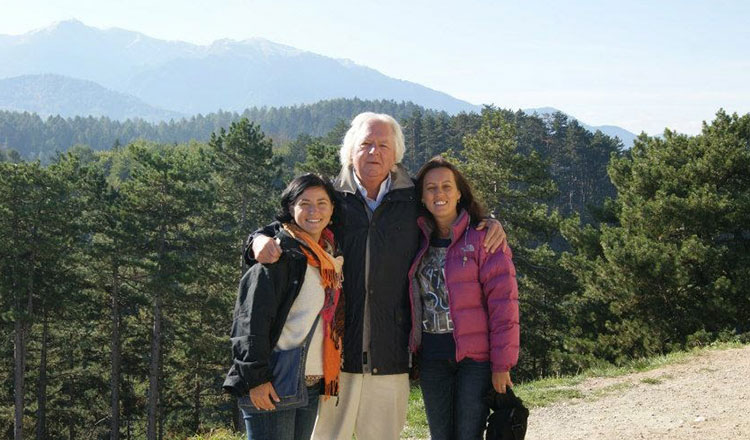Sivananda Bahamas Blog
Expand Your Horizons …
Our Blog
Lightning Dreamwork: Four Steps for Bringing Your Dreams Alive
In February 2015, Robert Moss shared his Lightning Dreamwork process with workshop participants. Here are the key steps, as described on his website www.mossdreams.com.
Let’s suppose you are sharing a dream with one other person. We’ll call you the dreamer and the partner. Make sure you give each other your fullest attention (even in the midst of a crowded room).
Step One: The dreamer tells the dream as simply and clearly as possible. Start by giving your dream a title. It’s amazing how the deeper meaning and shape of your dream experience jump into high relief when you do this.
Step Two: The partner now gathers the following information: First, how did you feel when you woke up? This question offers vital guidance on the quality and urgency of the dream. Second, find out whether the dream reflects situations in waking life, including things that might manifest in the future. By running a reality check, we help to clarify whether a dream is primarily (a) literal (b) symbolic or (c) an experience in a separate reality. Third, what would you like to know about this dream?
Step Three: The partner tells the dreamer, “If it were my dream, I would think about such-and-such.” As the partner, you are now free to bring in any associations, feelings or memories the dream arouses in you, including dreams of your own that may contain similar themes. For example: If the dreamer has told you a dream in which she is running away from a bear, you may recall a dream of your own in which you hid from a bear — before you discovered that the bear was an ally. Your own experience may lead you to say, “If it were my dream, I would like to go back into the dream and meet the bear again and see whether it might be an ally.” In this way, you would be gently guiding the dreamer to take action on the dream.
Sharing in this way with strangers can be amazingly rewarding – as long as the rules of the game are respected. One of those ironclad rules is that we never presume to tell someone else what his or her dream means for them; we can say what it would mean for us, if it were our dream.
Step Four: Finally the partner says to the dreamer, “How are you going to honor or act on the guidance of this dream?” If we do not do something with our dreams in waking life, we miss out on the magic — bringing something through from a deeper reality into our physical lives.
Here are some suggestions for honoring dreams: create from a dream by writing a story or poem, a drawing or talisman; take a physical action to celebrate an element in the dream, such as wearing the color that was featured in the dream, traveling to a place from the dream, making a phone call to an old friend who showed up in the dream.
[Read Of Kairos and Sea Shells, a post Robert wrote at the end of his stay at the ashram.]

Robert Moss is the creator of Active Dreaming, an original synthesis of modern dreamwork and shamanism. A former lecturer in ancient history at the Australian National University, he is a best-selling novelist, poet, journalist, and independent scholar who leads seminars all over the world. His nine books on dreaming, shamanism, and imagination include Conscious Dreaming; The Secret History of Dreaming; and Dreaming the Soul Back Home. His latest book, The Boy Who Died and Came Back, is a personal narrative of his adventures in multidimensional reality since an Australian doctor told his parents when he was three, “Your boy died and came back.”








